-
Product Name
NUBP1 Polyclonal Antibody
- Documents
-
Description
Polyclonal antibody to NUBP1
-
Tested applications
WB, IHC
-
Species reactivity
Human
-
Alternative names
NUBP1 antibody; NBP antibody; NBP1 antibody; NBP35 antibody; nucleotide binding protein 1 antibody
-
Isotype
Rabbit IgG
-
Preparation
Antigen: Recombinant fusion protein containing a sequence corresponding to amino acids 201-320 of human NUBP1 (NP_002475.2).
-
Clonality
Polyclonal
-
Formulation
PBS with 0.02% sodium azide, 50% glycerol, pH7.3.
-
Storage instructions
Store at -20℃. Avoid freeze / thaw cycles.
-
Applications
WB 1:500 - 1:2000
IHC 1:50 - 1:200 -
Validations
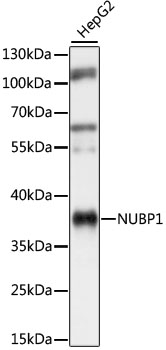
Western blot - NUBP1 Polyclonal Antibody
Western blot analysis of extracts of HepG2 cells, using NUBP1 antibody at 1:1000 dilution.Secondary antibody: HRP Goat Anti-Rabbit IgG (H+L) at 1:10000 dilution.Lysates/proteins: 25ug per lane.Blocking buffer: 3% nonfat dry milk in TBST.Detection: ECL Basic Kit .Exposure time: 1s.
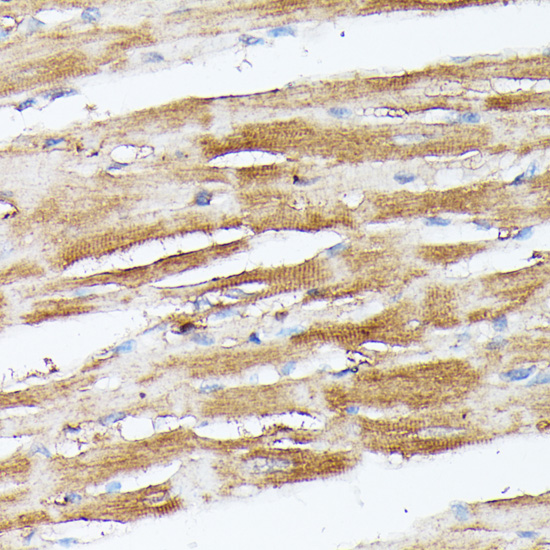
Immunohistochemistry - NUBP1 Polyclonal Antibody
Immunohistochemistry of paraffin-embedded rat heart using NUBP1 antibody at dilution of 1:100 (40x lens).
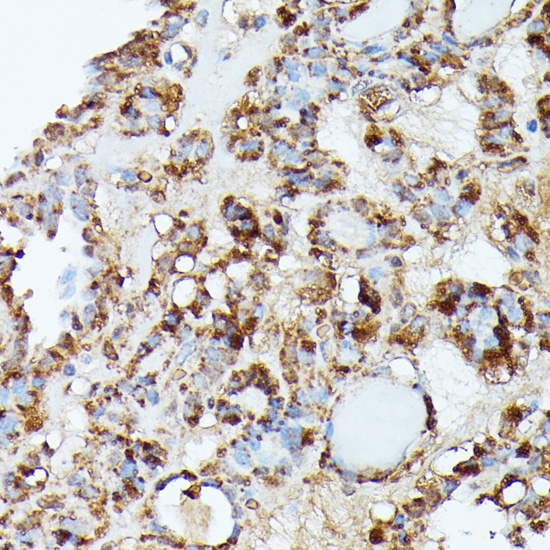
Immunohistochemistry - NUBP1 Polyclonal Antibody
Immunohistochemistry of paraffin-embedded human thyroid cancer using NUBP1 antibody at dilution of 1:100 (40x lens).
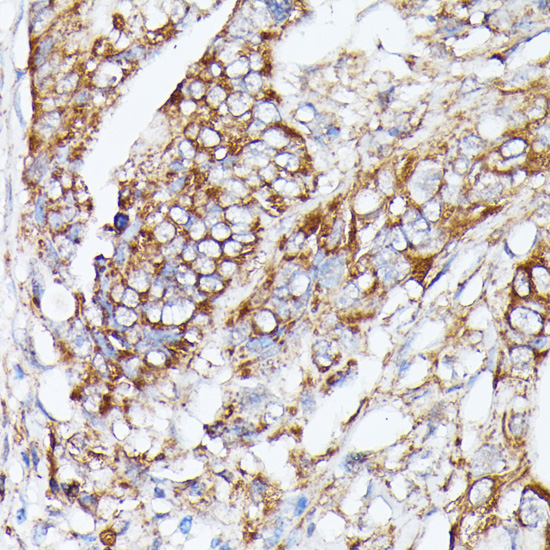
Immunohistochemistry - NUBP1 Polyclonal Antibody
Immunohistochemistry of paraffin-embedded human colon carcinoma using NUBP1 antibody at dilution of 1:100 (40x lens).
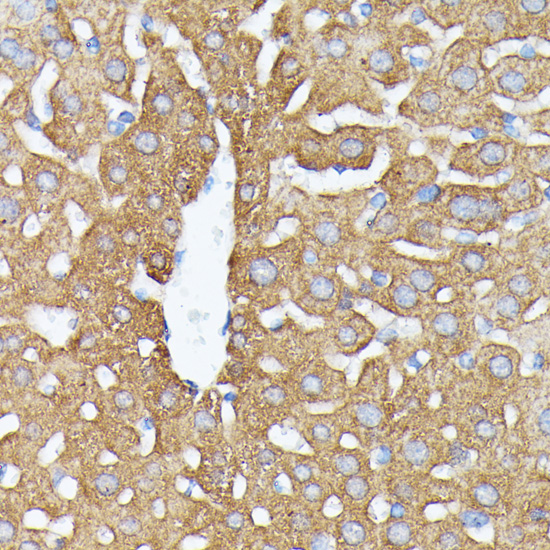
Immunohistochemistry - NUBP1 Polyclonal Antibody
Immunohistochemistry of paraffin-embedded mouse liver using NUBP1 antibody at dilution of 1:100 (40x lens).
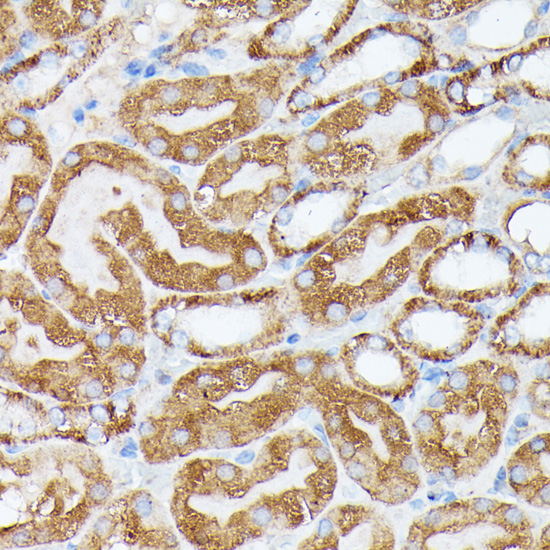
Immunohistochemistry - NUBP1 Polyclonal Antibody
Immunohistochemistry of paraffin-embedded mouse kidney using NUBP1 antibody at dilution of 1:100 (40x lens).
-
Background
Component of the cytosolic iron-sulfur (Fe/S) protein assembly (CIA) machinery. Required for maturation of extramitochondrial Fe-S proteins. The NUBP1-NUBP2 heterotetramer forms a Fe-S scaffold complex, mediating the de novo assembly of an Fe-S cluster and its transfer to target apoproteins. Implicated in the regulation of centrosome duplication (By similarity). Negatively regulates cilium formation and structure (By similarity).
Related Products / Services
Please note: All products are "FOR RESEARCH USE ONLY AND ARE NOT INTENDED FOR DIAGNOSTIC OR THERAPEUTIC USE"
